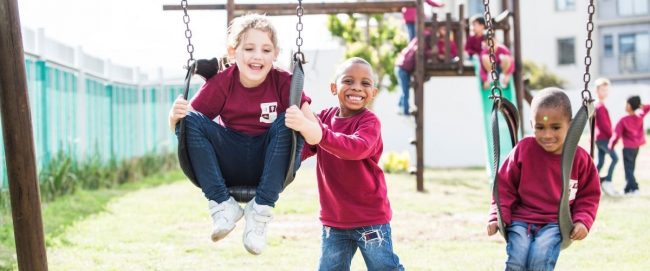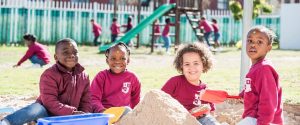Movement Education improves student brain and physical health
Research has shown that movement can be linked to certain brain functions in children. Cross lateral movement, for example, allows the right and left brains to work together. This helps to awaken different brain lobes.
Along with lateral movements, jumping, skipping, and hopping are all linked to cognitive activity in the brain. Because children who sit for more than 10 minutes are deprived of oxygen and glucose, movement can enhance learning. After a time, the brain becomes sleepy and switches off.
Including movement in education improves students’ morale and allows them to perform at a higher school level.
Students learn more and can stay focused by working at a higher level. It helps more children. Every educator will tell students that this is the most important thing.
Health and Physical Education: The Importance
Physical Education is an obligatory learning area within the school curriculum that provides students with opportunities to lead active and healthy lifestyles. Schools are the best place to learn and develop health-related skills. Students can improve their health and that of others by learning about physical and health education.
What does Movement Education mean?
Movement education is instruction that teaches children how to improve their motor skills by using physical movement. As part of physical therapy, movement education is often used to help students and children gain a better understanding of the body’s motion and improve their ability to move in daily activities. Movement education is designed to improve physical performance and health.
Benefits of Moving in Schools
Students who take regular, scheduled movement breaks throughout the day and use movement between and within lessons are more well-behaved and engaged and can focus more on what they are learning and retain it better.
Here are some benefits movement breaks can offer:
Learning efficiency
-
Because it partially controls navigation and short-term memory, the hippocampus requires time to process information.
-
Students can refocus their brains when they return to the content.
-
Moving helps you develop social skills that are essential for comprehension and critical thinking.
-
Re-energizing learning is possible by realigning the brain/body connection
Stress Relief, Mood Elevation, and Social Perks
-
Students who are stressed or uncomfortable will have a difficult time learning new information, especially if they are using critical thinking skills or need to link new information with their own experiences, prior knowledge, or abstract thought.
-
Successful learning is based on student-to student and teacher-to-teacher relationships. Research has shown that students who are in safe, supportive environments and are kind to one another are more likely to succeed academically.
-
Modern life is more static, especially for children who are involved in P.E. Recess is being cut to make way for academic achievement.
-
We often get our best ideas when we’re having a break
-
This may help to reduce overwhelm by the content
Class Cohesion
-
Increases student participation and attendance in class
-
Building relationships and concern for others’ well-being
-
Increase self-esteem and sense of belonging
-
Enhances communication and listening skills
-
Encourages laughter, fun, and learning
-
Increases self-discipline, motivation
Ideas can be both fun and functional.
The movements can be short and easy. It takes only thirty seconds to two minutes to accomplish all this. Simple breaks include bending at the waist and touching your toes, marching around the room, jumping jacks five times, jumping up and down, jumping jacks, moving a piece paper in a figure-8 motion between your legs and around the floor, or clapping loudly at set intervals. Students can be asked to move and play with papers that teachers pass out. Students can make their own math quizzes or peer edits by putting their paper in a ball. The teacher can then tell the class to freeze the paper. All students will need to grab a piece of paper and flatten it. These ideas can be fun and functional.
Students love learning in environments that integrate movement. They perform better academically and retain information more efficiently. Creative teachers will see many ways to add excitement to their lessons, and students will love them for that. If you have any winning ideas, let us know.
When you think about the movement education model and the concepts it contains that you want students understand, consider the acronym B.E.R.S. It stands for body, effort and relationships. Each of these four concepts is an important part of the movement ed framework.
The Body: Understanding the body as an instrument
Your students should explore the body within the movement ed framework. You want them to see their body as an instrument and to be able to move in different ways. Their movement is a way for them to ask the question of what is happening and what it is actually doing.
We know that they can explore locomotor and non-locomotor actions. But there are other elements they may be able use to make those actions more creative or express themselves through different body shapes. Can they perform them in a wider-body shape or a narrower-body shape? They should be able to perform those actions in a circular shape or bent shape. Understanding the different body shapes can help them express their creativity.
Effort: What is the best way to take action?
As far as effort is concerned, a concept in the context of a movement or model or framework is considered a concept. Your students should be able answer the question “How is this action being done?” You want them to be able to use different adjectives to describe their movements. This is what you want them able to do in relation to effort. You can also have them explore time as a component of that concept. Speed is one example. They must be able to perform the different actions and movements of their local motor skills, as well as non-local motor skills, at a slower speed. They can do it even though they are speeding up and accelerating. They could also do it while decelerating, which would reduce their speed. They might also be able to explore the different actions and movements that they could make as a function force. They can do these things with either a lighter or stronger force.
Relationships: Who or what are you doing this action with?
You want your students to ask the question, “With whom or what are they doing their action?”. To better understand the concept of relationships, they will use their bodies to answer this question. That’s where propositions or even adverbs can come in to play. They will be able to describe and understand the connections they make to other objects and people through their movements. They can explore how they do things by themselves, in pairs, in groups or with partner pairs. Or they can explore how they do them together, mirroring each other’s movements, leading and following each other. They can contrast when they are doing something opposite, or in unison. They can also explore proposition words, where they might be able to explore moving over, under, around, through, and even on top of things. All that comes into play. They look at propositions and adverbs to see who or what their action is.
Space: Where are they taking action?
Your students can then look at the concept space in the context of the movement framework. This will enable them to ask the question, “Where is my action taking place?” They can then explore, what can they do in their personal space to make those movements and actions? Or can they do it in general space? Are they able to do these different actions or movements going forward or backward in directions, sideways or going to the left or right? They can also explore the different paths. They can do these different movements whether they are following a straight path, a curving pathway, or zigzag route. You can even do it at different levels. They can do these different movements whether they are at the top or bottom of a medium-level. As your students get more proficient in understanding these concepts, you can build on them and combine them so that your students can perform the movements in many ways that allow for creativity and individuality.
Okay, let’s move and learn!


